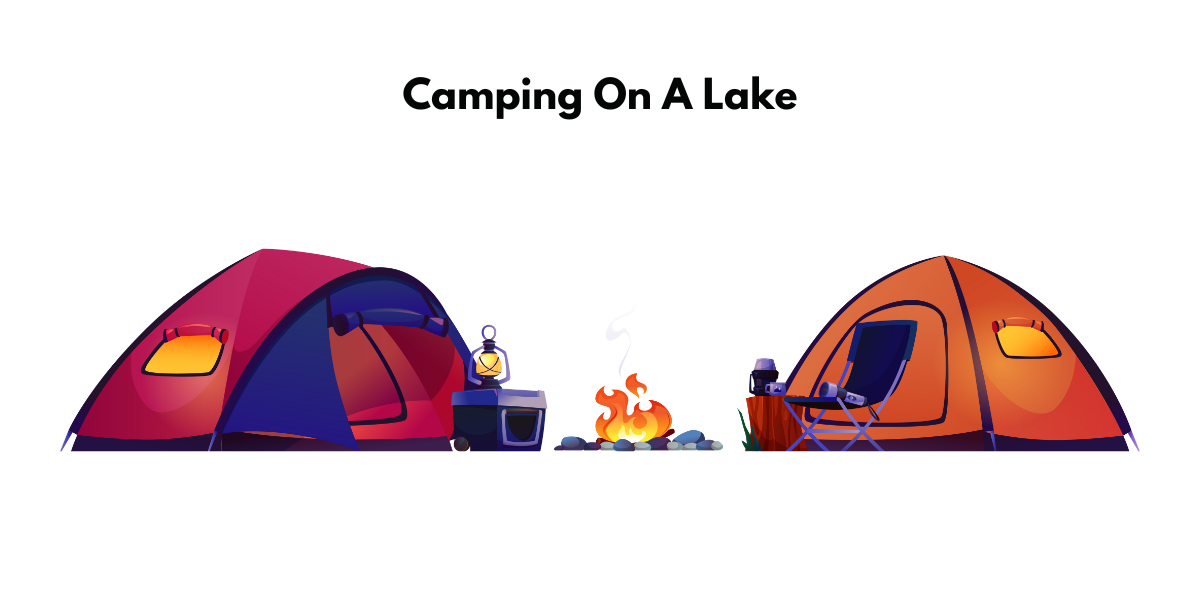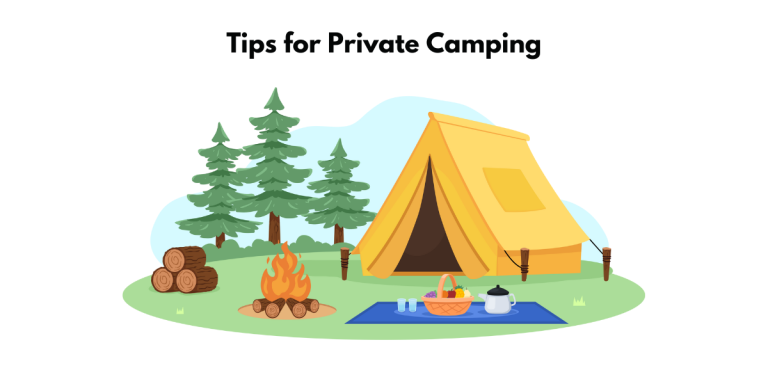How to Camp on a Lake Near You: 11 Best Camping Spots at Lakes
What to Expect from Your Lakeside Camping Experience
The moment you arrive at your lakeside campsite, you are immediately confronted by a breathtaking view of serene waters reflected by the soft hues of the setting sun. This campsite, a sought-after destination, sits on an acre of private space fitted with shady trees, nestled on the shores of Lake Elsinore in Riverside, Arizona, just like a mini getaway. With a commendable rating of 91%, the site is praised by 35 campers, who are impressed by the accommodations, which include a private dock, potable water, a deluxe porta-potty, and a picnic spot under a water mister canopy. Continuing along the same elevation towards a reservoir-like setting, you’ll find that your experience doesn’t merely stop with camping; the ambiance is perfect for hiking, biking, and off-roading — particularly adjacent to a private reservoir — signing you up for a wholesome outdoor adventure.
Why Choose Lake Camping?
The Beauty of Nature and an Unparallelled Tranquility
Treasuring moments of solitude while witnessing the dawn as an explosion of colors spilling over azure waters – this is the allure that draws many to the idea of lakeside camping. Nature unveils her raw beauty with lush mountains at a distance, wildflowers adding seasonal colors to the landscape, and the calls of diverse wildlife setting the background score. Grand Teton National Park, near Jackson, Wyoming, personifies this atmosphere. With its over 230 miles of breathtaking mountain trails, high-alpine camping zones, lakeshore, and boat-in sites, you stand amidst some of the most awe-inspiring mountain wilderness in the world. The beauty of nature, coupled with unparalleled tranquility, is a balm to the weary soul, delivering a much-desired escape from the noise of our steadfast urban life.
Grand Teton National Park’s pristine aura resonates with the silence of the morning mist and endorses a time for relaxation and reflection— a call toward tranquility and inner peace. Not an unlikely setting for those looking for their zen moments.
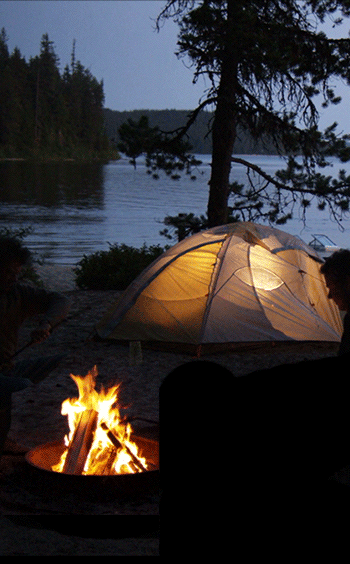
Wide Array of Activities for Everyone
You might be compiling your next bucket list or looking for fun activities for family or friends—whatever your circumstances might be, lakeside campsites cater to everyone. Beyond the solace and tranquility, these natural playgrounds offer a humid playground for a wide array of activities ranging from camping and fishing to exploring and adventure.
If you’re a water sports enthusiast, Buffalo Lake introduces you to opportunities like kayaking, paddleboarding, and swimming. The more adventurous ones can venture for wildlife viewing, hiking, horseback riding, or monument tours. For the active folks, biking and running trails wind their way around the lake, providing miles of fun and exploration.
The less physically inclined can engage in beach exploration, bird watching, interpretive activities, or geocaching—a playful way of experiencing the outdoor treasures. Even when the cold winter months roll around, these lakeside campgrounds transform into winter camping and offer other snow-related activities, promising you an all-around year escape. These varying recreational activities cater to diverse interests and age groups, making lakeside camping a delightful experience for everyone.
Exploring Top Lakeside Campsites in Different Regions
California’s Picturesque Lakeside Campgrounds
California’s treasure trove of natural beauty extends beyond its famous sandy beaches to its vibrant and stunning lakes. Expertly positioned in diverse topographies, these lakes offer the best spots for camping whether in Sierra Nevada’s winter wonderland or the alluring Wine Country.
- Lake Tahoe sits as the crown jewel of California’s lakes, welcoming visitors year-round. This place comes alive with boating activities in summer and transforms into a skier’s paradise in winter.
- Nestled within the Sierra Nevadas is the town of Mammoth Lakes, where a collection of small, picturesque lakes punctuates the Alpine landscape.
- Northern California is home to Lake Shasta, and Southern California gives you Big Bear Lake, each ensconced in mountainous environs, making them ideal spots for camping, adventure, and outdoor relaxation.
- Taking a breather from vineyard hopping in the Wine Country? Three lakes – Lake Sonoma, Lake Berryessa, and Clear Lake are placed to refresh you in between the tastings.
- Near Fresno, Bass Lake is a hidden jewel nestled in proximity to the Yosemite National Park, making it a popular camping spot for those who venture into the area.
Each of these lakes has campgrounds, RV parks, and cabins either on or near the water, offering you numerous options to pick your perfect site for a memorable lakeside camping experience.
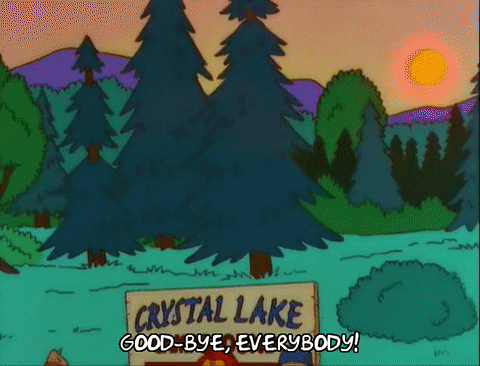
Discovering Other Lakeside Camping Spots Near You
Perhaps you’re considering a more local or regional camping trip, not too far from home. Here’s a tip: Use Hipcamp’s location-based searches to find the perfect site. Regardless of whether you reside in the Midwest plains or the eastern mountains, the United States is filled with stunning lakes ready for your camping adventure.
Take Minnesota’s Boundary Waters Canoe Area Wilderness, a glorious excursion for canoe & kayak lovers, with over a thousand lakes linked by trails known as ‘portages’. Alternatively, explore Idaho’s Redfish Lake, surrounded by the breathtaking Sawtooth Mountains, offering a variety of outdoor activities, from fishing to horseback riding.
In the Southwest, camping on the white beaches of Texas’ Lake Travis is a unique experience. For East Coasters, Lake George in the Adirondack Mountains of New York offers island camping opportunities, a thrilling experience not to be missed.
For campers living closer to the coast, Galveston Island State Park in Texas beckons you with its bay-side and beach-side campgrounds. Or try the subtropical camping experience in Florida’s Everglades National Park, where Flamingo Campground offers canoeing and freshwater fishing.
To find the perfect lakeside spot near you, enter your location on Hipcamp, filter by ‘water’ and ‘lake views’, and you’ll get a list of exciting options to plan your next adventure. Now all that’s left to do is to pack up and go!
Planning Your Perfect Lake Camping Trip
Choosing the Right Gear for Comfortable Camping
Being prepared with the right camping gear is key to ensuring a fuss-free and enjoyable camping experience. Let’s explore some essentials that should be part of your packing list:
- Shelter and Bedding: Your best bet for a sound night’s sleep in the great outdoors is a good tent. Try the Coleman Montana 6-Person Tent which can comfortably house six, making it perfect for family or group outings. For sleeping, check out the Hydrophobic Sleeping Bag with Advanced Synthetic, designed to keep you warm.
- Cooking Gear: A reliable stove is indispensable for preparing meals. Coleman Even-Temp Propane Stove, 3-Burner is a top choice for its even cooking abilities. Accompany this with a Lodge Seasoned Cast Iron 3 Skillet Bundle for versatile cooking options.
- Coffee Making: For caffeine lovers, a good coffee setup is crucial during camping. Try the Cone Coffee Maker, or go old-school with the Coleman 12-Cup Percolator.
- Heating: If you’re camping during colder months, a portable heater would come in handy. Consider the Mr. Heater Buddy Grey Indoor-Safe Portable RV Radiant Heater which offers warmth and safety.
- Recreation: Don’t forget about fun activities too. Perception Kayaks Sound 10.5 or the Intex Explorer K2 Kayak, 2-Person Inflatable Kayak Set could add a thrilling dimension to your lake camping adventure.
Ensure you check and cross-verify your camping gear packing list because forgotten items may become a hitch in an otherwise perfect camping excursion. Your utmost priority should be a seamless and enjoyable experience.
Leave No Trace: Preserving Our Natural Environment
Leave No Trace (LNT) is a philosophy embraced by outdoor enthusiasts worldwide, promoting responsible outdoor behavior to minimize human impact on the environment. As we immerse in nature during our camping trips, a real responsibility lies upon us to preserve it for future generations. Here are some core principles of LNT:
- Plan ahead and prepare: Research the regulations and special concerns of the area you plan to visit, check for fire restrictions, and understand the type of wildlife you may encounter.
- Travel and camp on durable surfaces: Use existing trails and campsites to avoid creating new ones and damaging vegetation.
- Dispose of waste properly: Utilize designated restrooms or carry out all waste, including food waste. If you choose a site that lacks restroom facilities, then the “cathole” method is recommended. Dig a hole six to eight inches deep and at least 200 feet from water, camp, and trails. All waste should be removed from the park and properly disposed of.
- Leave what you find: Preserve the natural environment by not disturbing wildlife or plant life.
- Minimize campfire impacts: Use designated fire pits when available, or consider using camp stoves for food cooking. Extinguish all campfires completely before leaving your site.
- Respect wildlife: Observe from a distance. Feeding or approaching wildlife disrupts their natural behavior and exposes them and people to risk.
- Be considerate of other visitors: Respect other campers. Keep noise levels down, especially during quiet hours, and respect the privacy of others.
Adopting LNT ensures our continued enjoyment of the outdoors and keeps our environment pristine.
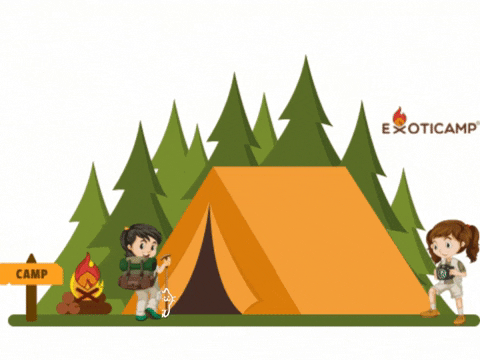
Making Your Lake Camping Reservation: How to Book Your Unique Lake Camping Experience
Securing your booking for a lakeside camping site is a key step to locking in your adventure. Many parks and campgrounds offer direct booking through their websites. Here’s how you can book your lake camping experience:
- Determine your Preferred Location: Identify the lake site where you want to camp. Consider accessibility, proximity to water, availability of shaded areas, facilities, amenities, and your desired view.
- Consider your Camping Style: Whether you prefer a tent, RV, or glamp with cabin accommodation, choose a campsite that caters to your preferred camping style.
- Check Availability: For popular lakeside camping sites, you might need to book months in advance, especially for peak camping season. Use the booking website to check the availability of your desired dates.
- Make a Reservation: Once you’ve confirmed your dates and location, proceed with the booking process. You may need to deposit a specific amount to reserve your spot. Online booking platforms typically offer secure payment methods.
- Get a Confirmation: Post-booking, you will receive a confirmation email summarizing your reservation details. It’s a good idea to print or save a digital copy of this confirmation.
Tips for Secure and Hassle-Free Booking
While booking your campsites online is a breeze, there are some potential pitfalls that you can avoid with some handy tips:
- Research Well: Use the information available online to research campsites, nearby attractions, amenities provided, and reviews from other campers. Platforms like Recreation.gov offer a wealth of information to make your life easier.
- Identify Trustworthy Sites: Choose official websites or trusted booking platforms to reserve your campsite. Beware of scams or third-party vendors who may not be reliable.
- Account for Peak Periods: Keep in mind that popular camping spots can fill up to capacity during peak periods like summer months or holiday weekends. Prepare to book well ahead of time to ensure a spot.
- Verify All Details: Before clicking the ‘Book Now’ button, double-check all the details. Do your selected dates align with your plan? Is the campsite you selected suitable for your camping style? Misunderstandings can be avoided by reading carefully.
- Understand Cancellation Policies: Be clear about the cancellation and refund policies to protect your investment in the event of a change in plans.
- Keep Confirmation Handy: Have the confirmation email or printout handy at the time of check-in. You don’t want any issues spoiling the start of your camping adventure.
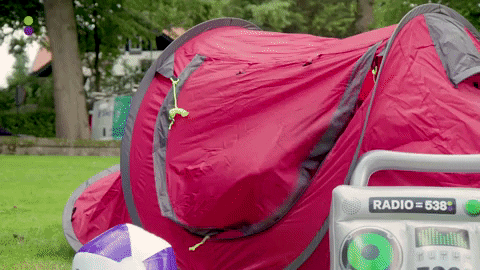
Ensuring a Safe and Enjoyable Camping Journey
Adherence to Camping Rules and Regulations
Any camping trip’s success largely depends on knowing and adhering to the camping rules and regulations of the chosen site. While these vary from park to park, some of the common regulations include:
- Capacity Limits: Most campsites specify the maximum number of people and vehicles per campsite. For instance, at Lake Metroparks, the maximum capacity is eight people per site with a limit of two cars.
- Check-in and Check-out Times: Typically, the check-in time is around 3 pm, and check-out is no later than noon on the day of departure. Exceptions are only made with prior arrangements with the park management.
- Noise Regulations: Most parks enact a noise curfew around 10 pm. Guests are required to keep noise levels to a minimum so as not to disturb other campers or nearby residents.
- Waste Disposal: Disposing of human waste outside of designated restroom facilities requires digging a cathole at least 200 feet from water, camp, and trails.
- Firewood Policies: To prevent the spread of invasive species, bringing your firewood is generally prohibited. Most parks provide firewood, or it can be collected from within the immediate campsite area.
- Pet Policies: If pets are permitted, they should be kept quiet, on a leash, and under control at all times.
Emergency Preparedness While Camping
While camping is generally a safe activity, it is always wise to be prepared for potential emergencies. Frequently, you will be in a remote area with limited access to medical care. Here are some key ways to ensure you are prepared:
- First Aid Kit: Always bring a comprehensive first aid kit and know how to use it. Make sure it includes bandages, antiseptics, tweezers, and specific medication if required, like epinephrine autoinjectors for severe allergic reactions.
- Emergency Contacts: Have a list of emergency contact numbers, including local park authorities, nearby hospitals, and police.
- Weather Forecasts: Keep updated with the weather forecasts for your camping area. Conditions can change rapidly, and you should prepare for various weather scenarios. Popular camping platforms like Hipcamp integrate with the National Weather Service to provide real-time Red Flag Warnings and Fire Weather Watch Warnings.
- Local Fauna: Be acquainted with the local fauna. In wilderness areas, encounters with wildlife such as bears or snakes can occur, and understanding their behavior can keep you safe.
- Emergency Plan: Have a plan in case of an emergency. This can include knowing the evacuation route, assembling a survival kit, and designating an emergency contact who knows your whereabouts.
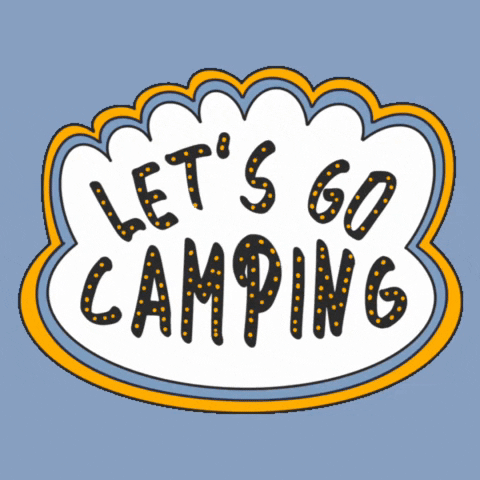
FAQs
Can I bring my pet to Lakeside Camping?
Yes, you can bring your pets to most lakeside campgrounds. However, it’s essential to check the specific pet policies of the campground beforehand. While some campsites warmly welcome furry buddies, others may have restrictions or prohibit them altogether.
Carolina Camper Cabins, for example, allow pets in cabins 1, 2, and 5 but restrict them from all others. In most outdoor areas, pets are required to be physically restrained or leashed, not exceeding six feet.
Owners are asked to promptly address any noisy or dangerous behavior, or if the pet threatens or harasses wildlife. Cleaning up after your pet and properly disposing of waste is a must. And remember, pets should be kept under control both for their safety and for the comfort of other campers. So yes, your pet can be part of the fun but comes with responsibilities too!
What are some recommended camping items for lakeside camping?
Packing the right items is crucial to a successful lakeside camping trip. Essentials often extend beyond basic camping gear to specific items that make the lakeside experience more enjoyable. Here’s a list of some recommendations:
- Water Sports Equipment: If you plan on enjoying the lake, remember to pack items like swimsuits, towels, and floater devices. For more fun, bring along snorkeling gear or a fishing rod. Kayaks can be a great addition to exploring the lake as well. Consider investing in good-quality inflatable watercraft like the Intex Explorer K2 Kayak.
- Sun Protection: Sunscreen, sunglasses, and a sturdy hat are essential to protect yourself from the sun’s harsh rays.
- Insect Repellent: Lakeside spots may also see their fair share of bugs. Make sure to pack enough insect repellent.
- Exterior Lights: String lights or torches can add charm to your campsite and provide the necessary light when the sun goes down.
- Outdoor Furniture: A comfortable camping chair or hammock such as Favorland Camping Hammock can enhance your relaxation time.
- Coolers: Keep your drinks and other perishables cool with a robust cooler, ideal for hot summer camping.
- Water Purifier: If you are utilizing lake water, a water purifier pump is an important addition.
- Games: Outdoor games such as frisbee or volleyball are great for entertainment and can be enjoyed by everyone in the group.
Remember, each camping trip may need unique tools depending on the activities planned, the weather, and the location. Double-check your packing list to avoid forgetting essential items. It’s better to have and not need than to need and not have.
This wraps up our comprehensive guide to lakeside camping. We hope it has offered you valuable insights, tips, and tricks to ensure your next lakeside camping experience is nothing but incredible. Happy Camping!
- Nature’s Wonders in the United States: Your Ultimate Natural Attractions List - August 29, 2024
- How to Camp on a Lake Near You: 11 Best Camping Spots at Lakes - December 19, 2023

